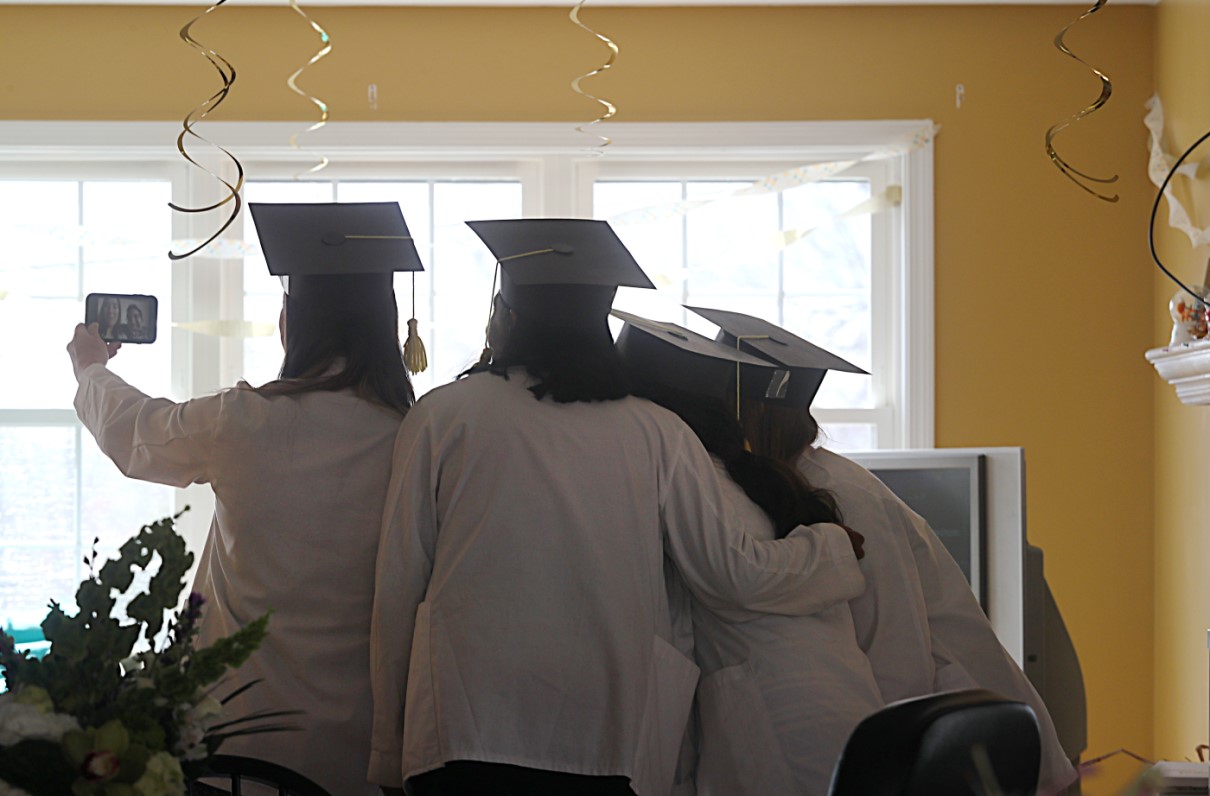The transition from campus to cubicle is always a challenge. It’s the first time many students find themselves on a path without a known destination. In the academic environment, goals were clear-cut and the ways to achieve them were mapped out distinctly. After graduation, the pathways blur.
These feelings of uncertainty are magnified for the Class of 2020. Their senior year was anything but routine, and their abrupt transition off campus in March did not provide an opportunity to celebrate a great achievement, connect with prospective employers, or socialize what’s next with friends and mentors over coffee.
Now their diploma is in the mail, and they’re living in the basement. And you want to help.
The reality of graduating during the worst economic downturn since the Great Depression might not be the end of the world, but it feels like we can see it. Moreover, there’s considerable evidence that entering the workforce during periods of high unemployment can have lasting impact. Quoted recently in The Wall Street Journal (subscription required), Northwestern University professor Harold Schwandt noted “those who enter the labor market in bad economic times don’t only earn less when they start but also persistently in the years to come.”
[RELATED: Upcoming Transition and Career Events From MOAA]
Against this backdrop, here’s an action plan for parents and new graduates:
- Encourage risk taking and an openness to new possibilities. Recruiters are becoming increasingly more comfortable with a young person who has held three or four jobs in six or seven years. This is a good time to explore different career possibilities and take a risk while commitments are few and dreams are big.
- Help children access your personal and family networks as they begin their job search. By making introductions and facilitating connections to expand their child’s network, parents can accelerate that search. Begin by helping your son or daughter develop a list of people who may be able to assist, including relatives, neighbors, friends, and professional colleagues. In addition, help your child recognize that their job search network also includes classmates, professors, faculty advisers, and guest lecturers, as well as contacts made through participation in athletic programs, fraternities, sororities, internships, and related extracurricular activities. Don’t forget honorary and professional associations, as well as the alumni chapters in your child’s preferred employment cities. These valuable connections are easily identifiable on LinkedIn and through a school’s graduate placement office.
- This is the time to clean up social media. The first thing a networking connection or recruiter is likely to do after meeting a prospective job candidate is a LinkedIn profile review, or perhaps a Google search. It’s best to remove anything that’s even remotely questionable.
- Encourage more professional communications with recruiters and mentors than your son or daughter would have with their peers. Timely follow-up is equally important.
- Get the little details right for virtual job interviews. Some examples: Suit up in professional attire, check IT requirements ahead of time, ensure the background of the shot conveys an air of polish and professionalism, avoid poorly lit rooms and position the computer so the primary light source is behind the screen, close all unused apps, mute cellphones and other electronic devices, and disconnect computers not in use from the network to minimize the likelihood of a poor connection during an important conversation.
- Once the interview begins, don’t forget to smile and focus on the lens, most likely on the perimeter of the computer screen, and not the interviewer’s image. Nothing beats good eye contact, a pleasant smile, and thoughtful questions. Some examples: What are your expectations for the first six months? How do you provide feedback to employees? Is there any additional information you need to support my candidacy? What’s the next step in the process?
Finally, remind the new graduate that employers are looking for a mix of skills and potential when assessing job candidates, including an understanding of the world beyond campus life. Candidates who reveal glaring gaps in their knowledge of world events during the interview process demonstrate a lack of intellectual curiosity that can make a bad impression.
Scanning daily electronic summaries of at least one national newspaper and a weekly periodical, along with completing detailed research on the target company and its main competitors – as well as pressing the shirt and snugging the necktie – will help make a positive first impression. Then, as your child is about to seal the deal with a hiring manager, remind them to be artful and ask about the firm’s 401(k) matching and discounted stock purchase programs.
Jump-Start Your Career
Gain access to all of MOAA’s career tools available for you and your spouse.

